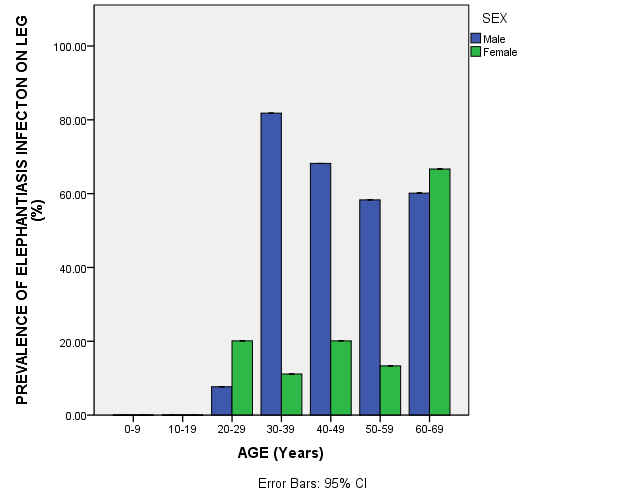The Prevalence of Lymphatic Filariasis Infection among Primary School Children (5-9 Years) of Infected Adults in Ihiala Local Government Area of Anambra State, Nigeria
DOI:
https://doi.org/10.54117/ijph.v3i2.21Keywords:
Lymphatic Filariasis, Filariasis Test Strip, Ivermectin, AlbendazoleAbstract
Aims: To determine the prevalence of Lymphatic flariasis infection among primary school children and of infected adults in Ihiala LGA, Anambra State.
Study design: Cross-sectional study.
Place and Duration of Study: Department of the Ministry of Health Anambra State and a few selected primary school children in Ihiala Local Government Area between June 2021 and July 2022.
Methodology: A total of 150 residents were examined for Lymphatic filariasis. In the Primary Health Centre, a screening for clinical manifestation was done among adults. Sample analysis was done using Filariasis Test Strip while Semi-structured questionnaires were used to collect data on knowledge, attitude and practices (KAP) among residents.
Results: Out of 299 blood samples collected from school children and 150 questionnaires distributed to residents to ascertain the awareness of Lymphatic filariasis among residents in the study areas and also to evaluate the efficacy of Ivermectin and Albendazole distributed annually through Mass Drug Administration since 2014, Filariasis Test Strip (FTS) showed 0.0% prevalence of circulating filarial antigen among the school children while the total prevalence of clinical manifestations among residents was 43.33% with higher rate in males (57.33%) than females (42.67%) while forty to 49-year-olds recorded the highest prevalence (13.33%) of clinical manifestations. Statistical analysis was performed with ANOVA using SPSS package and the mean difference is significant at the .05 level that is the P value of the analysis is significant at ≥0.005 level.
Conclusion: Our findings on Filariasis Test Strip (FTS) showed 0.0% prevalence of circulating filarial antigen among the school children implying that Lymphatic Filariasis transmissions is low in the study area, suggest the Ivermectin and Albendazole distributed through MDA since 2014 in the endemic areas of Anambra have been effective for Lymphatic filariasis control and should remain the recommended strategy for the elimination of Lymphatic filariasis.

Downloads
Published
How to Cite
Issue
Section
License
Copyright (c) 2023 S. O. Obiefoka, I. O. Emmy-Egbe, L.C. Anyaegbunam, B. O. Uba, C. I. Anameze, I. J. Ogoamaka, N. L. Kamala, C. Ezeigwe, O. Akaogu, O. A. Odumodu, C. C. Emmy-Egbe, O. S. Ezenwata, C. B. Chukwubude

This work is licensed under a Creative Commons Attribution 4.0 International License.
